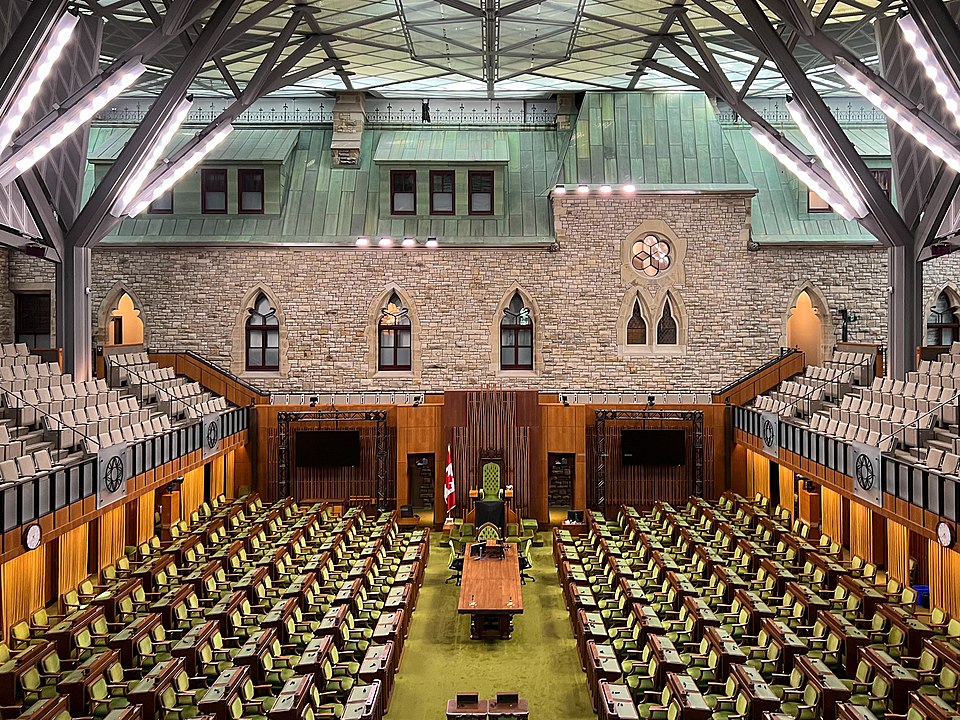Canada News
Residential school system recognized as genocide in Canada’s House of Commons: A harbinger of change

The House of Commons resolution also indicates new perceptions of old colonial beliefs and emphasizes harms caused by residential schools. (File photo by Hutima – Own work, CC BY-SA 4.0)
In a historic move, Canada’s House of Commons unanimously recognized the Indian Residential School System (IRS) as genocide on Oct. 27, 2022.
The resolution builds on the 2015 contribution of the Truth and Reconciliation Commission of Canada. The commission was barred from using the term genocide for legal reasons and instead called the practice cultural genocide.
The recent motion was introduced by member of Parliament Leah Gazan. The move follows Pope Francis’s acknowledgement during his visit to Canada of the ongoing trauma and damage done by residential schools to Indigenous communities.
It’s possible that the Pope’s reference to the Indian Residential Schools as genocide swayed some members of Parliament to agree to this new resolution because this was the second time the concept was introduced to the House.
Gazan’s motion says that in the opinion of the House of Commons, Canada’s residential school system violated Article 2 of the UN Convention on the Prevention and Punishment of the Crime of Genocide. Article 2 explains that for something to be considered genocide, an “intent to destroy, in whole or in part, a national, ethnical, racial or religious group…” must be evident.
Although Canada’s resolution is non-legally binding, the motion helps Canadians reconceptualize the Indian Residential School system.
Now, genocide can be used to describe the residential schools without the qualifying adjective or disclaimer that it is “only” cultural. This change is beyond a mere alteration of words. For both Canada and the world, it is a significant and consequential change.
International debates: the Genocide Convention
The scope of genocide is an ongoing debate in international law. The current international definition has been reproduced in numerous international statutes, including the Rome Statute of the International Criminal Court.
The word genocide was created following the Second World War by the legal scholar, Raphael Lemkin, to describe the destruction of a nation or ethnic group through various means.
The Convention defines genocide as acts committed with the intent to destroy, in whole or in part, a national, ethnical, racial or religious group by five acts:
a) Killing members of the group,
b) Causing serious bodily or mental harm to members of the group,
c) Deliberately inflicting on the group conditions of life calculated to bring about its physical destruction in whole or in part,
d) Imposing measures intended to prevent births within the group, and
e) Forcibly transferring children of the group to another group.
Typically, during debates on the Genocide Convention, items (a) to (c) of the definition are designated elements of physical genocide, while (d) and (e) are identified as biological genocide. This excludes cultural elements and restricts its scope to physical and biological genocide.
These debates on the scope of the Genocide Convention highlight differing views regarding physical, biological and cultural actions intended to terminate a group. Physical genocide is killing or serious injury to a targeted group. Biological genocide is destroying a group’s reproductive capacity. Cultural genocide is destroying a group’s specific characteristics.
However, a critical look at the Genocide Convention reveals an element of cultural genocide.
Recognizing cultural genocide within the scope of the Genocide Convention acknowledges that cultural, physical and biological genocide all lead to groups’ social death — what the Genocide Convention attempts to prevent.
The Genocide Convention and Canada
The House of Commons’ acceptance of the term genocide supports arguments that what is dominantly conceived as cultural genocide falls within the scope of the Genocide Convention. This now raises new questions about how that interpretation may be applied to Canadian cases.
The House of Commons resolution also indicates new perceptions of old colonial beliefs and emphasizes harms caused by residential schools.
In 1948, at the time of passing the Genocide Convention, the colonial practice to culturally destroy and “civilize natives” was not publicly discouraged. And Canada successfully campaigned against the use of the term “cultural genocide” during discussions on the Convention.
This type of challenge, led by MP Gazan, to these old colonial beliefs and systems is one of many steps that can help lead to massive changes. Old colonial practices and beliefs still abound in literature and international law. There is much work to be done. For example, in Canada, section 318 of Canada’s Criminal Code on hate crime restricts genocide to physical and biological destruction.
Impact of resolution
The House of Commons’ recognition of the residential school system as “genocide” within the scope of the Genocide Convention supports viewing cultural genocide as genocide.
By doing away with “culture” in describing the IRS, the Canadian House of Commons has now recognized cultural destruction as a possible means of genocide.
Following the path of the House of Commons, individuals may now legitimately refer to the residential school system as genocide. The resolution would also likely impact future negotiations and cases to compensate victims of the IRS.
This resolution may not have any current implication legally in an international court of law. But it represents a shift in the way we think about our history and may affect future international jurisprudence.![]()

Temitayo Olarewaju, PhD Candidate, Peter A. Allard School of Law, University of British Columbia
This article is republished from The Conversation under a Creative Commons license. Read the original article.





















